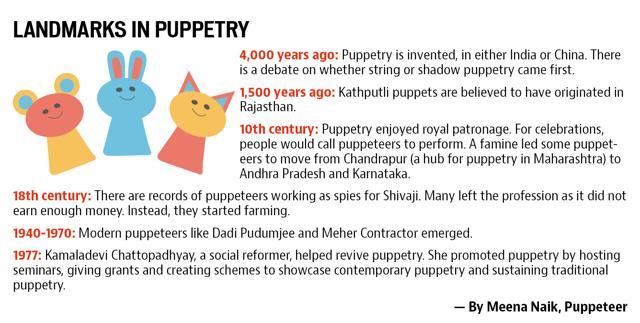Strings attached: How puppetry reinvented itself for a modern audience
Puppetry, one of the oldest forms of storytelling, is undergoing a reinvention as puppeteers experiment with techniques to appeal to a larger audience
Puppetry, one of the oldest forms of storytelling, is undergoing a reinvention as puppeteers experiment with techniques to appeal to a larger audience
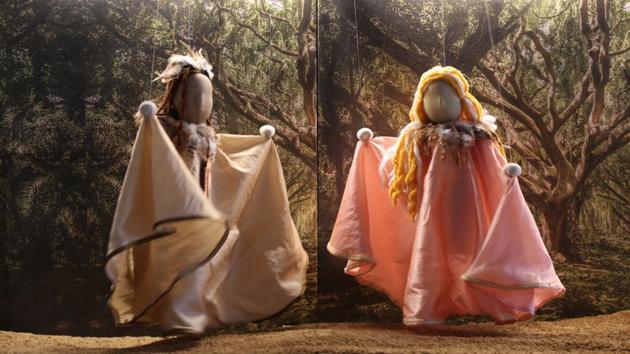
We are at MCubed library, Bandra, for a performance of The Magic Flute, Mozart’s final opera. It’s a fairy-tale about a dashing prince, a princess, a comic sidekick, and a villainous priest. What sets this one apart? The protagonists are marionettes — string puppets — without facial features (to encourage viewers to use their imagination). And the play introduces children to Western classical music.
Read: String theory: Watch Mozart’s opera being performed by puppets
It’s the brainchild of Charu Prasad, who runs Iris Creative Education. “Children are perpetually glued to screens. Puppetry can be a good form of entertainment and a fun way of learning,” says Prasad, who hosts workshops on puppetry for children, where they learn aspects ranging from costume-making to script-writing. Her next show will revolve around sex education.
The twist in the tale
Prasad is among several new-age puppeteers bringing a twist to the 4,000-year-old traditional art form, long associated with kathputli puppets, and restricted to skits on epics. There are others: Delhi-based puppeteer Anurupa Roy of the Katkatha Puppet Arts Trust, and the Cold Feet sock puppet troupe.
With her play, Mahabharata, Roy pushes the boundaries by using life-sized puppets without strings. The puppeteer is on stage as well. Similarly, Cold Feet’s online sock puppet show, Freddy and the Hamper, discusses current issues, and is made for an adult audience.
In the last few months, puppet shows have been prominent at city events, including the Kahani Karnival (which had a fusion of the two fairy-tales using puppets) and TIFLI — International Festival of Theatre for Young Audiences (featured puppet play, Dinosaur, by Katkatha). The shows so far seem to be well-attended, a trend that indicates a younger audience is interested, or at least, intrigued. “There’s been a spurt in children’s festivals. And we’re using that to do more puppet shows,” says Roy.
Back in time
While puppetry is believed to have originated in either India or China, the art form has a global connect. Puppets have been found along with written records dating back to 5th century BC from Ancient Greece, while in the 17th century, England had slapstick Punch and Judy puppet shows, and Japan had Bunraku puppetry, where the puppeteer manipulates complex puppets on stage.
Despite its history in India — the most popular forms are kathputli wooden puppets from Rajasthan and leather puppets from Andhra Pradesh — puppetry has long been ignored due to a lack of funds and platform.
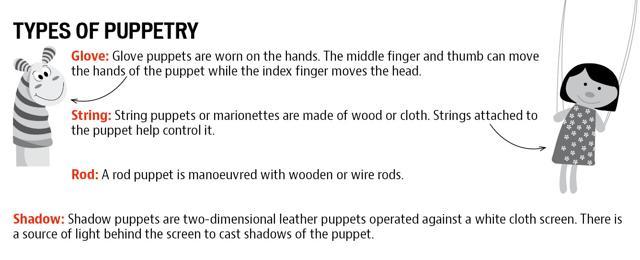
Closer home, a small step was taken towards giving the art form its due when Mumbai University introduced a certificate course in puppetry in 2012. The four-month course is conducted by puppeteer Meena Naik, and teaches theory and practical application of puppetry.
But funding remains a challenge. New-age puppetry groups either do corporate shows to raise funds, or seek funding internationally. Roy’s Mahabharata — to premiere globally this year at the World Puppet Theatre Festival, Charleville-Mézières in France — is partly funded by them as well. “France and Germany offer decent funding for puppetry,” Roy explains.
Know the craft
Puppeteers can be divided into generational ones — such as the kathputli puppeteers — and first-generation puppeteers who learned it abroad. While the former have a linear narrative focused on epics, the latter experiment with themes and forms.
But modern puppetry in India emerged in the 1950s-60s. Puppeteers who paved the way include Delhi-based Dadi Pudumjee (awarded the Sangeet Natak Akademi Award in 1992), and his mentor, Meher Contractor. The duo experimented with themes and made shows on issues such as substance abuse and AIDS awareness. In the ’70s, Doordarshan Mumbai gave a platform to puppeteer Meena Naik (she hosted the children’s TV show Kilbil with a hand puppet) and ventriloquist-puppeteer Ramdas Padhye (he hosted Meri Bhi Suno, performed for BBC and CBS).
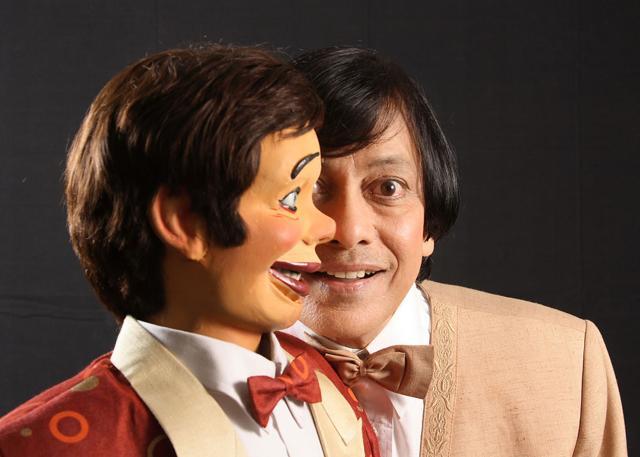
Padhye, an engineer by profession, popularised the character of Ardhvatrao on television, a puppet representing the common man. Now, with his son Satyajit, Padhye’s focus is on digital puppetry (made with computer graphics).
Much like yoga, which circled its way back to India via the West, puppetry, too, witnessed a lull followed by renewed interest now. While Naik learned by watching Eastern European puppeteers visiting India during the ’50s and ’60s, Pudumjee studied at the Marionette Theatre Institute in Stockholm. Contemporary puppeteers also observed the art in the West and adapted it to an Indian context.
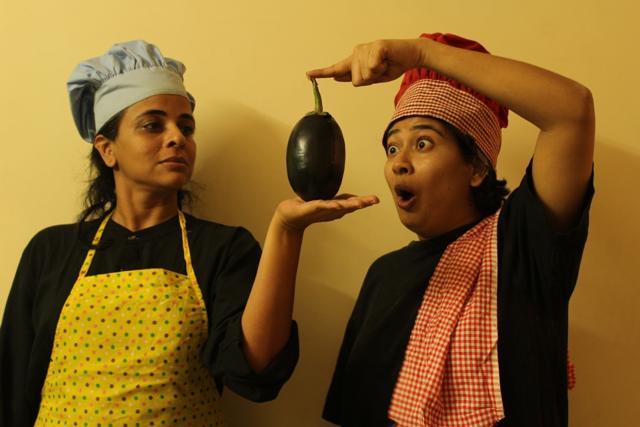
Newer definitions
Puppetry is expanding its horizons, and an offshoot is the edgier object theatre. One of its practitioners is Mumbai-based Choiti Ghosh, who runs Tram Theatre. “Object theatre came into being as the definition of puppetry began changing. The story is told through objects, but we don’t bring them to life,” she says. Ghosh has so far made plays using toys (A Bird’s Eye View) and a brinjal (Dhaaba).
From a form that was caught in a rut, puppetry is now a tool to educate, entertain and experiment. And the show seems to have just started.
